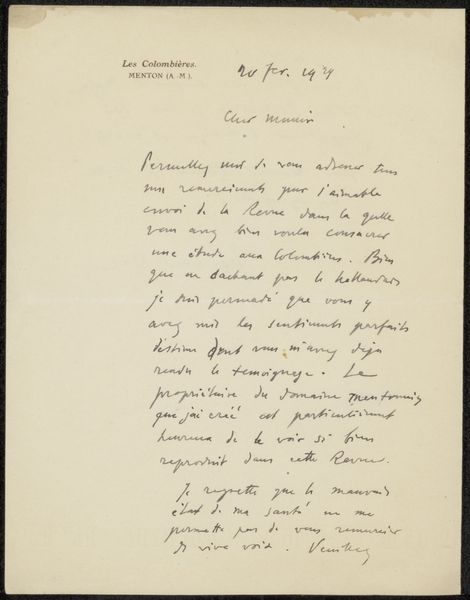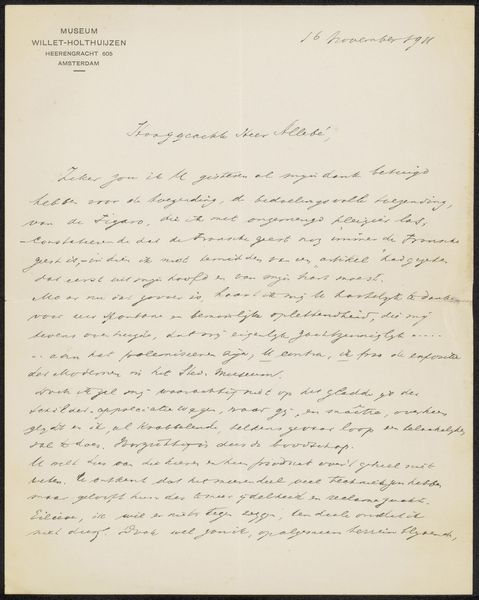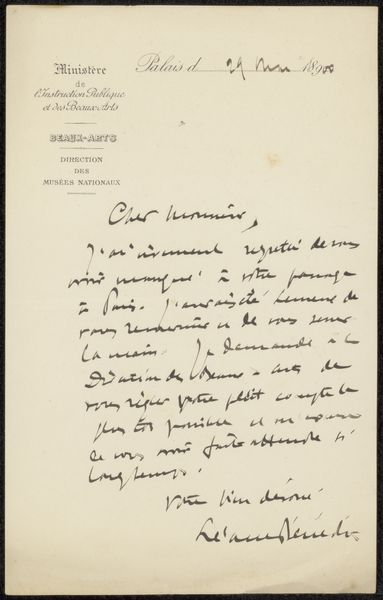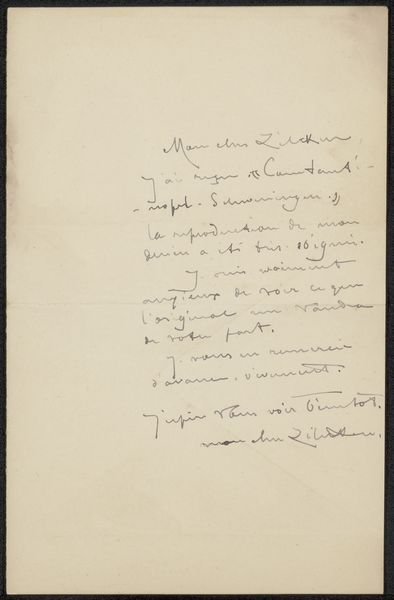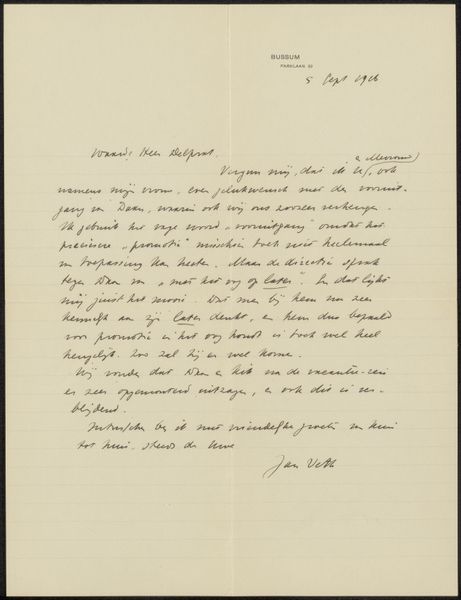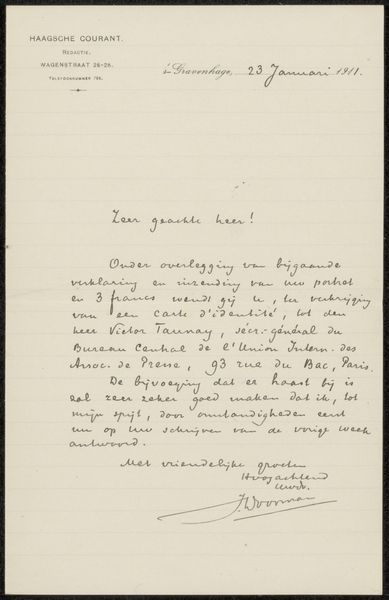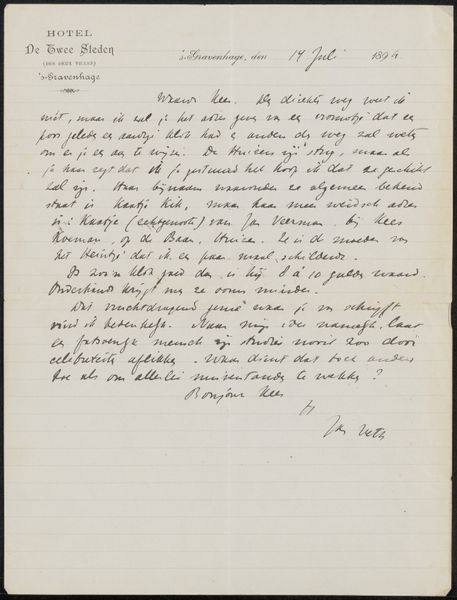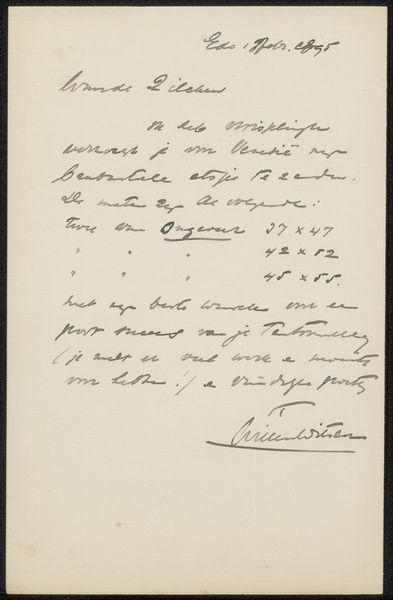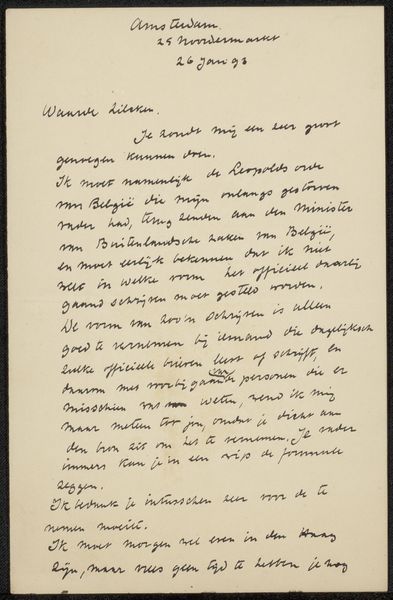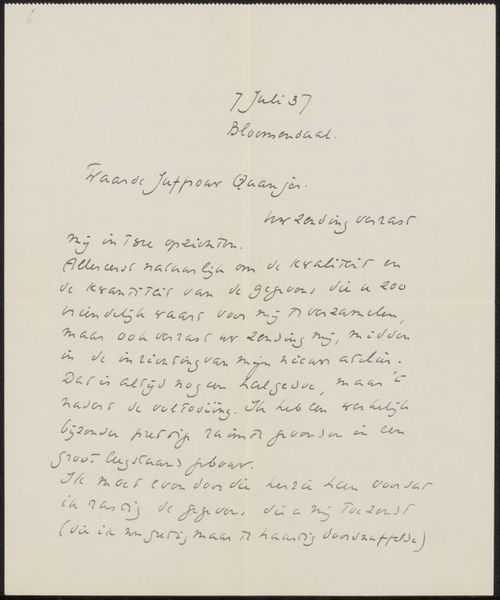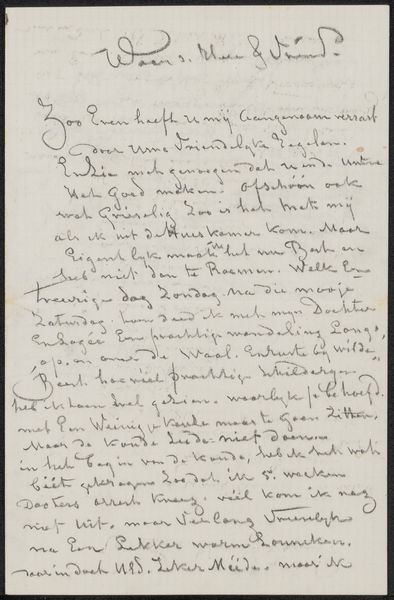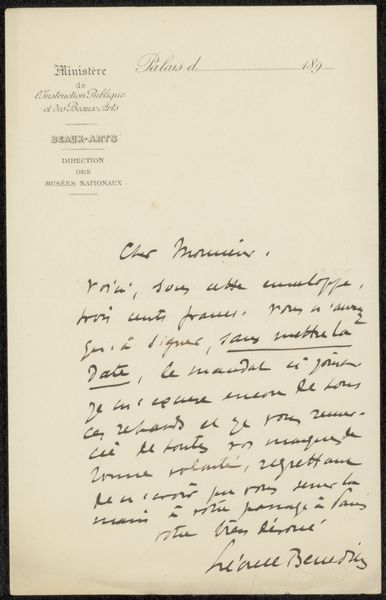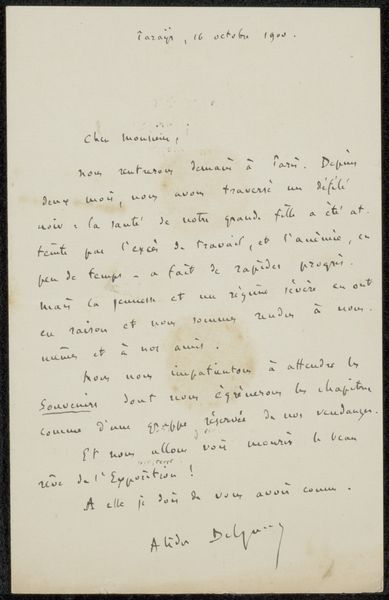
drawing, paper, ink
#
drawing
#
paper
#
ink
Copyright: Rijks Museum: Open Domain
Curator: This work, “Brief aan Philip Zilcken,” possibly from 1891-1898, by J. Doorman, crafted with ink on paper, presents an interesting opportunity to consider art's institutional life in the late 19th century. Editor: It seems pretty straightforward – a letter. The handwriting gives it a personal feel, yet, because it’s displayed as art, that intimacy feels somehow… curated, doesn't it? How do we even begin to approach something like this from a historical standpoint? Curator: Precisely! Consider the role of letters within artistic and intellectual circles during this period. It’s more than just personal correspondence. Letters were vital for establishing reputations, negotiating artistic terrain, and circulating ideas *before* mass digital communication. This specific letter tells us something about the inner workings of the Dutch art world, its networks, and its patronage system. Editor: So, this isn’t just *a* letter, it's a document embedded in a larger cultural and economic context. Zilcken was a known artist of the time, so this is business? Curator: More than purely transactional, it shows relationship building that directly influenced the perception and market value of art. How the work was chosen, who displayed it, what awards it might win - these choices helped make or break careers. Can we, in our modern environment of the commodification of data, interpret the content differently? Editor: I guess, in a sense, every piece of correspondence *is* part of a performative exchange of values. Thanks, I had only considered looking for a single historical fact to glean. Curator: Exactly, and remembering the exchange as an interactive performance lets us appreciate the letter not merely for what it says, but for what it *does* within a system of artistic production and validation.
Comments
No comments
Be the first to comment and join the conversation on the ultimate creative platform.
